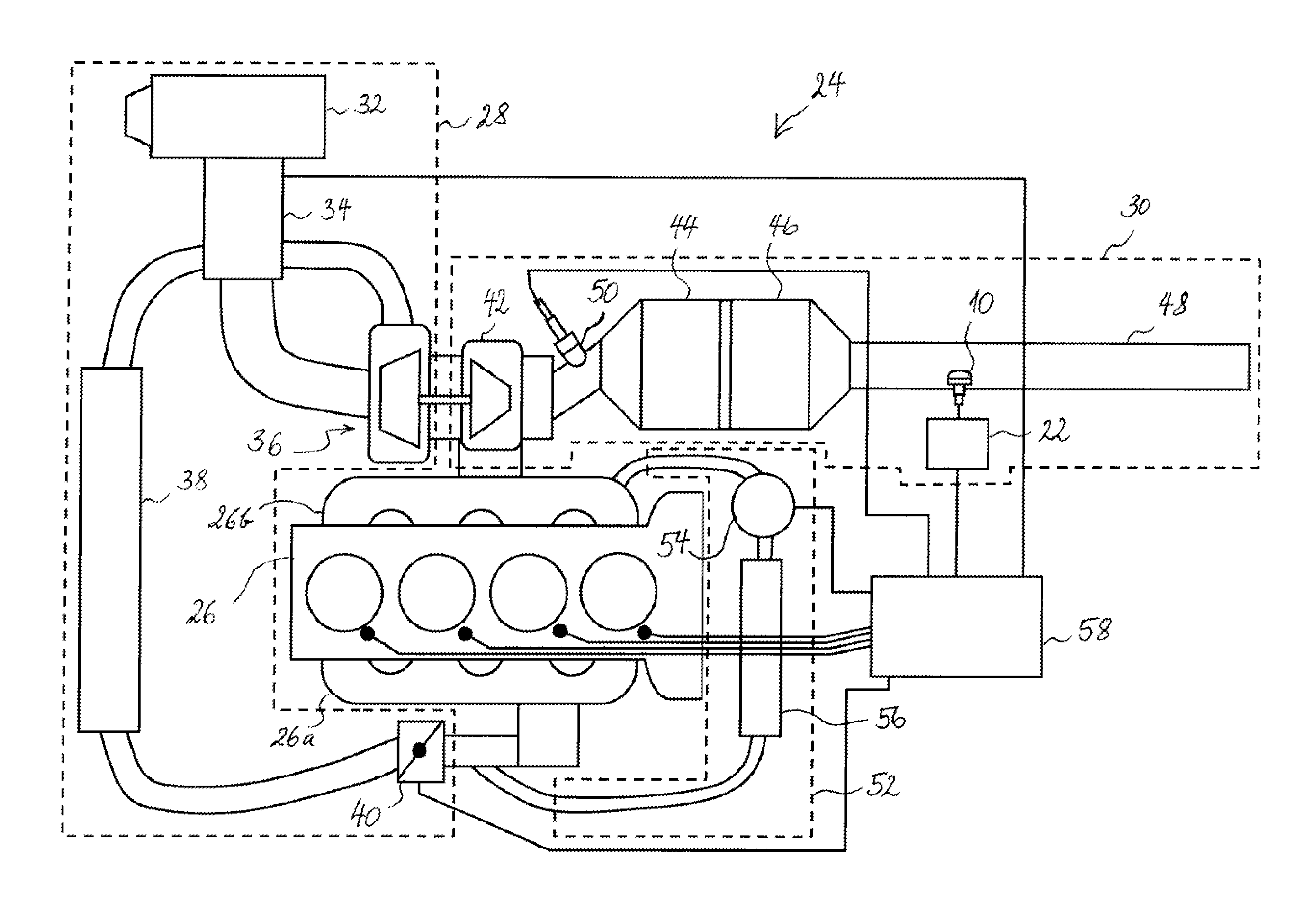Soot sensor functional capability monitoring
a technology of functional capability and soot sensor, which is applied in the field of soot sensing, can solve the problems of high probability and achieve the effect of fast detection of soot sensor malfunction
- Summary
- Abstract
- Description
- Claims
- Application Information
AI Technical Summary
Benefits of technology
Problems solved by technology
Method used
Image
Examples
Embodiment Construction
[0027]FIG. 1 shows an example of a soot sensor 10 that works according to a known principle (see e.g. US 2011 / 0015824 for reference). The soot sensor 10 comprises an insulating substrate 12 (e.g. made from ceramic) forming a sensor surface 14 exposed to the exhaust gas. Measurement electrodes 16 are arranged separate from each other on the sensor surface 14 in an interdigitated configuration. As long as the sensor surface 14 is free of soot particles, the electrodes 16 are electrically insulated from each other. When soot particles 18 deposit on the sensor surface 14, they eventually bridge the gap between the electrodes 16, allowing a current to flow between the electrodes 16 in response to a voltage applied between the electrodes 16. The more soot particles deposit on the sensor surface 14, the more conductive channels form between the electrodes 16 and the higher is the current measured. The soot sensor comprises a heating element 20 arranged in heat-conducting contact with the s...
PUM
 Login to View More
Login to View More Abstract
Description
Claims
Application Information
 Login to View More
Login to View More - R&D
- Intellectual Property
- Life Sciences
- Materials
- Tech Scout
- Unparalleled Data Quality
- Higher Quality Content
- 60% Fewer Hallucinations
Browse by: Latest US Patents, China's latest patents, Technical Efficacy Thesaurus, Application Domain, Technology Topic, Popular Technical Reports.
© 2025 PatSnap. All rights reserved.Legal|Privacy policy|Modern Slavery Act Transparency Statement|Sitemap|About US| Contact US: help@patsnap.com



